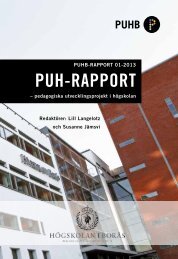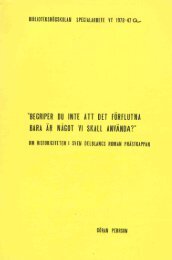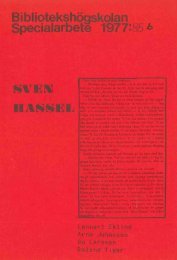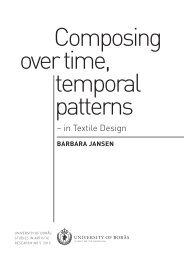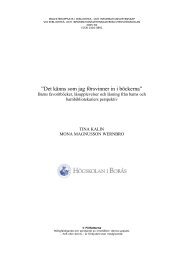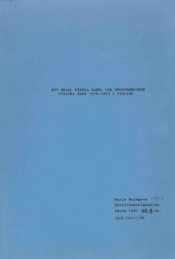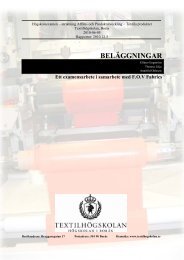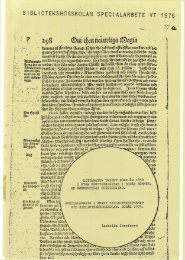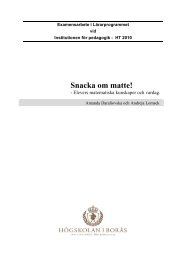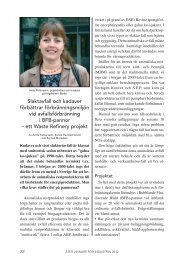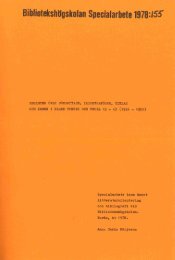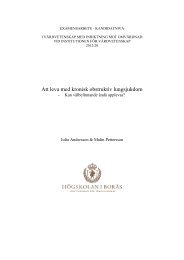2.1.8.2. Absorbency Under Load (AUL) - BADA
2.1.8.2. Absorbency Under Load (AUL) - BADA
2.1.8.2. Absorbency Under Load (AUL) - BADA
You also want an ePaper? Increase the reach of your titles
YUMPU automatically turns print PDFs into web optimized ePapers that Google loves.
2.1.8.1. Centrifuge Retention Capacity (CRC)<br />
The retention capacity was approximately determined by weight 0.03 g of the dried hydrogel in a<br />
non-woven pouch (6 × 4 cm). Then this closed pouch was placed in both water and 0.9% sodium<br />
chloride (Normal saline) for 30 min at 25±2° C and allowed to dip into liquids. The swollen pouch<br />
was removed from the water and saline solution and placed on a sieve (100-mesh) in order to<br />
remove the excess water for 5 min and then centrifuged in the centrifuge tube (Viva spin 20,<br />
Sartorius Biolab product), at 250 × g force for 5 min. The retention capacity of the protein<br />
hydrogel was calculated by using the equation (2) [17] .<br />
Weight of swollen gel after centrifuge – weight of dried gel<br />
CRC = (2)<br />
Weight of initial protein superabsorbent<br />
<strong>2.1.8.2.</strong> <strong>Absorbency</strong> <strong>Under</strong> <strong>Load</strong> (<strong>AUL</strong>)<br />
The absorbency under load (<strong>AUL</strong>) is a test method which measures the ability of a superabsorbent<br />
material to absorb different liquids under an applied load or controlling force in order to various<br />
absorbent products such as pad and diapers.<br />
A high value of <strong>AUL</strong> depends on high hydrogel strength and the high hydrogel strength can<br />
maintain a more hydrogel mass during swelling, even at high concentrations of superabsorbent<br />
material. The superabsorbent polymer with superior hydrogel strength has been achieved by<br />
increasing the degree of crosslinking.<br />
In general in the superabsorbent polymer when the <strong>AUL</strong> value, as a function of the degree of<br />
crosslinking is increased the retention capacity, as a reciprocal function of the degree of<br />
crosslinking is reduced at the same time [17] (Fig.16).<br />
39



